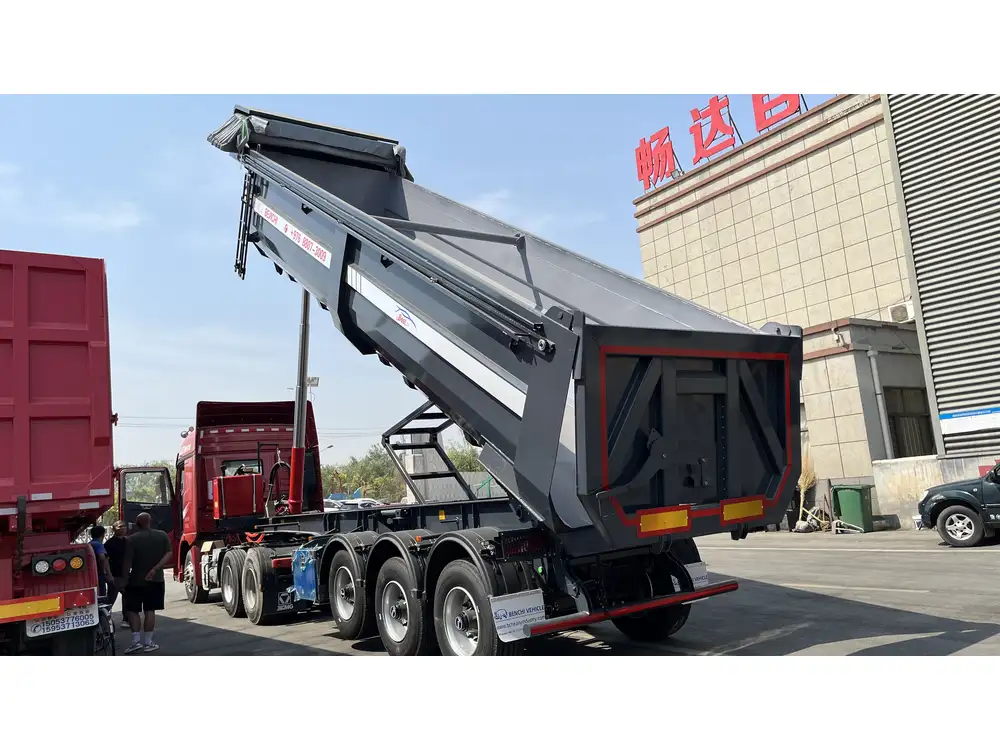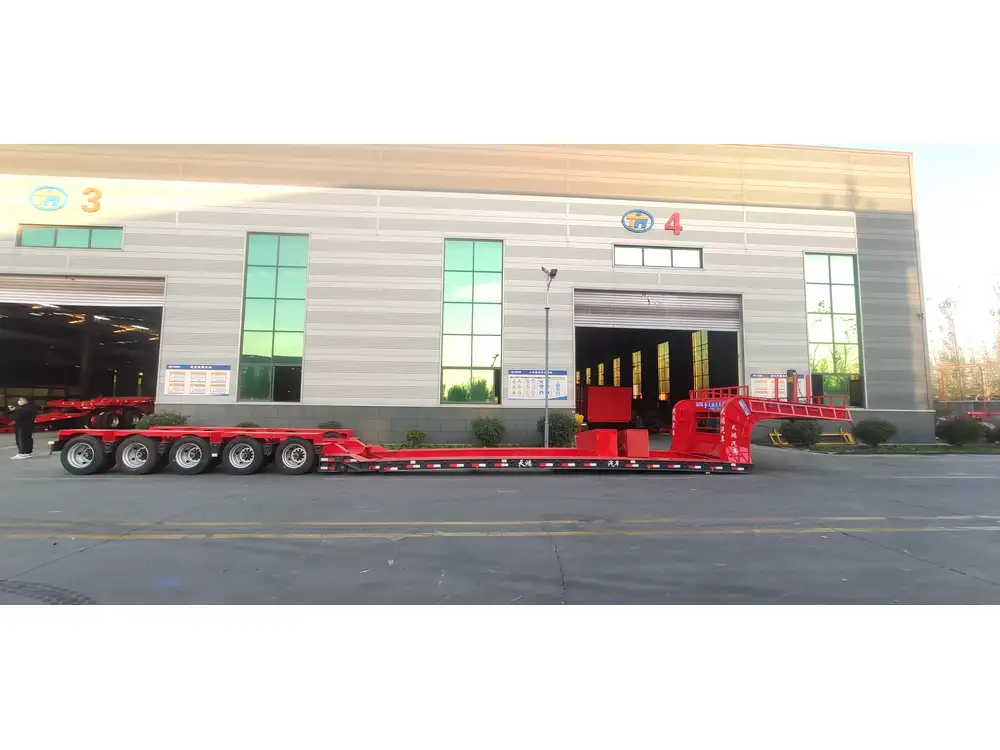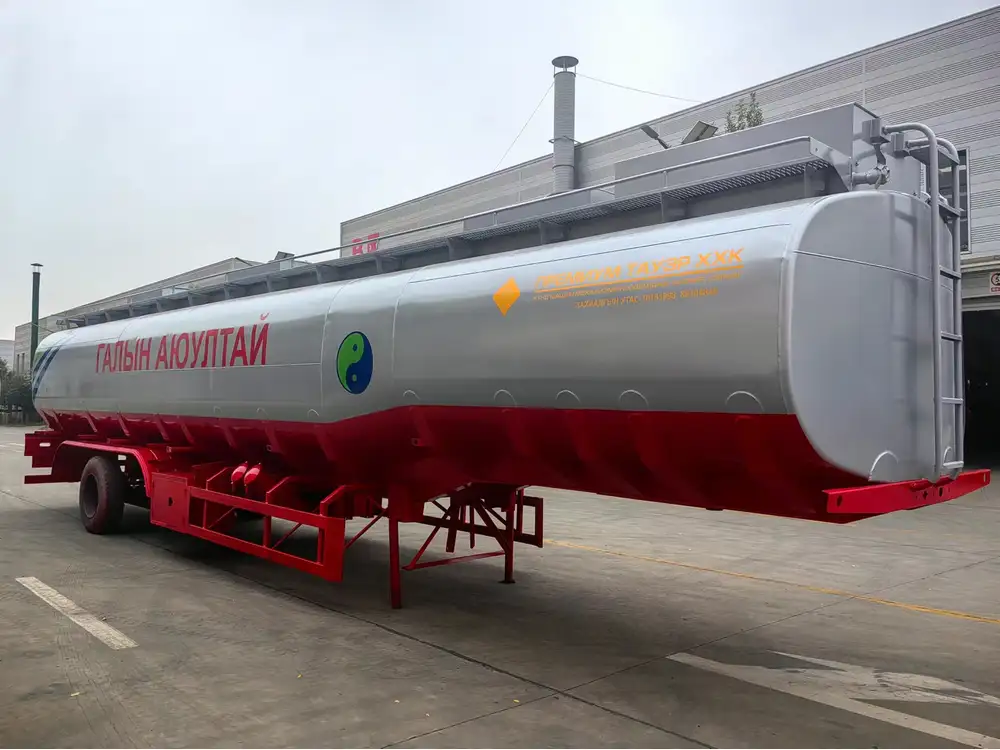Shipping a flatbed trailer involves various dimensions of cost considerations, practicality, and operational efficiency. Understanding these nuances is crucial for businesses looking to transport equipment efficiently. Here, we break down vital elements influencing shipping costs, methods of transportation, and additional charges that may apply, ensuring clarity for decision-makers.
Understanding Shipping Costs for Flatbed Trailers
1. Factors Affecting Shipping Costs
Shipping costs of flatbed trailers can vary dramatically based on a multitude of factors. Here’s an overview:
| Factor | Description |
|---|---|
| Distance | Longer distances increase shipping costs. |
| Weight and Dimensions | Heavier and larger trailers generally incur higher fees. |
| Load Type | Specialized loads may require advanced equipment, impacting cost. |
| Type of Carrier | Different carriers have varied pricing structures. |
| Seasonality | Demand fluctuations can significantly alter prices. |
| Fuel Prices | Soaring fuel costs directly affect shipping rates. |
| Insurance Requirements | Higher coverage needs can inflate overall costs. |
| Pick-Up and Delivery Locations | Accessibility issues may lead to higher fees. |

Detailed Analysis of Each Factor
Distance: Shipping costs are typically calculated on a per-mile basis. The greater the distance, the more you can expect to pay. For instance, transporting within a state may cost less than cross-country shipping.
Weight and Dimensions: Flatbed trailers are classified by their cargo capacity. Therefore, a standard flatbed may track a different rate than a heavy-haul trailer designed to carry more substantial loads. Accurate measurements are essential for obtaining quotes.
Load Type: If the cargo requires special handling or equipment—such as oversized or sensitive materials—additional expenses come into play for necessary permits, escorts, or padded transport.
Type of Carrier: As with any shipping service, pricing structures differ among carriers. Some may charge a flat fee based on service level, while others might use a variable rate structure reflecting demand.
Seasonality: Seasonal demand can impact pricing, particularly for industries reliant on agricultural or construction equipment. During peak seasons, rates can surge due to increased shipping volumes.
Fuel Prices: Fluctuations in fuel prices invariably affect shipping costs. Review current fuel surcharges as part of the overall estimate.
Insurance Requirements: Evaluate your needs for cargo insurance. Higher evaluation costs-to-ship can transform a reasonably priced shipment into a costly operation.
Pick-Up and Delivery Locations: Urban locations typically incur lower shipping rates compared to remote areas where carriers often charge extra for additional travel time and effort.
2. Comparative Shipping Costs
Understanding how costs compare across different carriers provides clarity when deciding on a shipping solution. Below is a table showcasing estimated shipping costs based on distance and weight:
| Distance (Miles) | Weight (lbs) | Estimated Cost |
|---|---|---|
| 100 | 10,000 | $800 |
| 500 | 10,000 | $1,800 |
| 1000 | 10,000 | $3,200 |
| 100 | 20,000 | $1,100 |
| 500 | 20,000 | $2,500 |
| 1000 | 20,000 | $4,500 |
Note: Estimates are based on market averages and can vary depending on specific conditions.
Shipping Methods for Flatbed Trailers

1. Futures and Options in Freight Shipping
When it comes to transporting flatbed trailers, various methods can be employed. The choice of method significantly impacts overall expense and delivery timeframe.
Common Freight Shipping Methods:
Full Truckload (FTL): This method is suitable for larger shipments where a full truck can be dedicated to one customer. It generally provides cost efficiency for shipping heavy items.
Less-than-Truckload (LTL): Ideal for smaller shipments, LTL involves consolidating multiple shipments into one truck. While this can reduce expenses, it may also increase delivery time due to handling multiple loads.
Intermodal Shipping: Utilizing a combination of rail and truck transport can sometimes provide cost savings. This method is particularly beneficial for long-distance shipping, though it may involve longer transit times.
2. Choosing the Right Carrier
When selecting a carrier for transporting flatbed trailers, certain factors must be carefully assessed:
Reputation and Experience: Engage with carriers experienced in flatbed shipping. Verify their track record for reliability and safety.
License and Insurance: Ensure that prospective carriers are fully licensed and carry adequate insurance.
Customer Reviews: Consult reviews and ratings to gauge service quality.
Cost Estimates: Seek quotes from multiple carriers to ensure competitive pricing.

Evaluating Carrier Options
| Carrier Type | Pros | Cons |
|---|---|---|
| Freight Broker | Access to multiple carriers; cost-effective | May have less control over service |
| Dedicated Carrier | Reliable service; consistent pricing | Higher costs; less flexibility |
| Intermodal Services | Efforts to reduce shipping costs | Longer shipping times potential |
Additional Fees and Considerations
1. Accessorial Charges
Understanding common accessorial charges can help in budgeting accurately. These surcharges might include:
Loading/Unloading Fees: Charges applied for loading and unloading services if not performed by the customer.
Detention Fees: Applicable if the truck waits longer than an agreed period.
Reefer Service Charge: Necessary for shipments requiring temperature control.

2. Special Permits and Regulations
Certain states impose weight and size restrictions, especially for oversized loads. Securing the necessary permits can incur additional costs, which should be factored into the shipping budget.
Best Practices for Shipping a Flatbed Trailer
1. Preparation Steps
Prior to shipping, ensure:
Proper Documentation: Contracts, permits, and insurance documents should be in order.
Cargo Securing: Properly secure loads to prevent movement during transport. This point warrants a discussion about the correct tie-down techniques and equipment.
Weight Distribution: Ensure even weight distribution across the trailer to abide by transportation regulations.

2. Tracking Shipments
Many carriers now provide tracking services. Opt for carriers that offer real-time tracking so that you can monitor the estimated arrival time and address potential issues proactively.
Conclusion
Shipping a flatbed trailer entails various dimensions of planning, cost assessment, and operational foresight. Understanding the factors influencing shipping costs ensures informed decision-making, while knowing the various shipping methods and additional fees allows for comprehensive budgeting and logistical planning. As you prepare to engage in shipping, remember that transparency and proper preparation can save time, money, and headaches down the line.
By adhering to best practices and remaining aware of market dynamics, businesses gain robustness in their operational capabilities, thus maximizing efficiency in flatbed trailer shipping. Consider consulting with logistics experts to develop tailored solutions that cater to your specific needs and make a significant impact on your shipping strategies. Whether transporting equipment for construction, agriculture, or industrial purposes, managing your approach effectively will ensure your assets arrive safely and economically—keeping your business on track and expanding your operational prowess.



